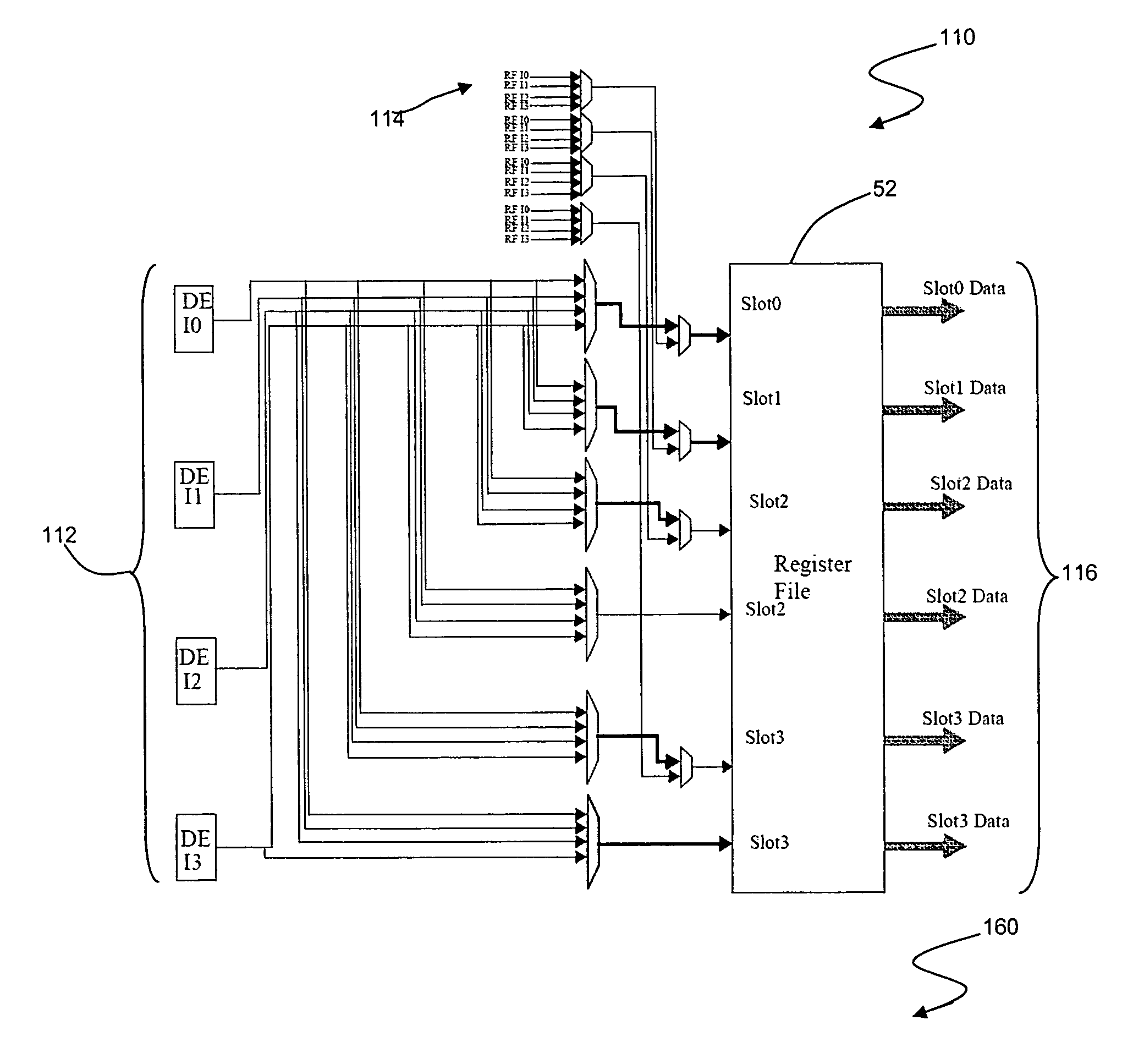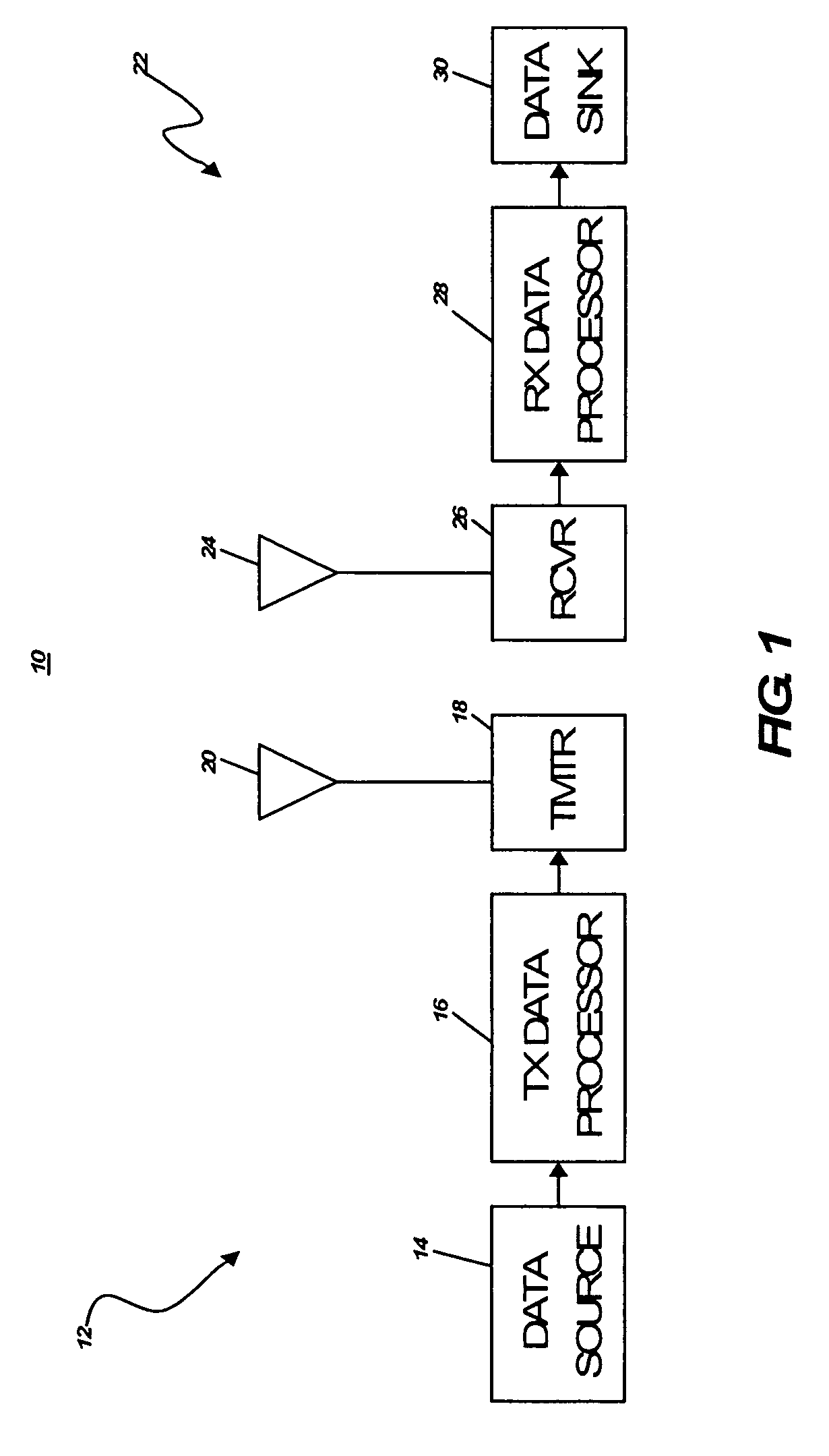Mixed superscalar and VLIW instruction issuing and processing method and system
- Summary
- Abstract
- Description
- Claims
- Application Information
AI Technical Summary
Benefits of technology
Problems solved by technology
Method used
Image
Examples
Embodiment Construction
[0023]FIG. 1 is a simplified block diagram of a communications system 10 that can implement the presented embodiments. At a transmitter unit 12, data is sent, typically in blocks, from a data source 14 to a transmit (TX) data processor 16 that formats, codes, and processes the data to generate one or more analog signals. The analog signals are then provided to a transmitter (TMTR) 18 that modulates, filters, amplifies, and up converts the baseband signals to generate a modulated signal. The modulated signal is then transmitted via an antenna 20 to one or more receiver units.
[0024] At a receiver unit 22, the transmitted signal is received by an antenna 24 and provided to a receiver (RCVR) 26. Within receiver 26, the received signal is amplified, filtered, down converted, demodulated, and digitized to generate in phase (I) and (Q) samples. The samples are then decoded and processed by a receive (RX) data processor 28 to recover the transmitted data. The decoding and processing at rec...
PUM
 Login to View More
Login to View More Abstract
Description
Claims
Application Information
 Login to View More
Login to View More - R&D
- Intellectual Property
- Life Sciences
- Materials
- Tech Scout
- Unparalleled Data Quality
- Higher Quality Content
- 60% Fewer Hallucinations
Browse by: Latest US Patents, China's latest patents, Technical Efficacy Thesaurus, Application Domain, Technology Topic, Popular Technical Reports.
© 2025 PatSnap. All rights reserved.Legal|Privacy policy|Modern Slavery Act Transparency Statement|Sitemap|About US| Contact US: help@patsnap.com



